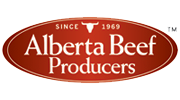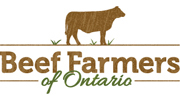Factors Affecting the Fed Cattle Basis
| Project Code: | 0005-017 |
| Completed: | September 2010 |
Project Title:
Final Report: Determinants of the Canadian-U.S. Basis for Cash Fed Cattle and Impacts from Government
Researchers:
Dr. Clement Ward & Dr. Ted Schroeder tcs@k-state.edu
Clement Ward, PhD Emeritis (Oklahoma State University), Ted Schroeder, PhD (Kansas State University), Lee Schulz (Kansas State University)
Basis influences feedlot profitability. The “fed cattle basis” is the difference between the prices that U.S. and Canadian packing plants pay for fat cattle, adjusted for exchange rate. In a normal market, basis reflects transportation costs and differences in supply and demand between Canadian and U.S. markets. Generally speaking, a narrow basis is a sign of a healthy market. The North American beef industry was highly integrated before BSE was discovered in Canada, and the basis averaged $0.07 to $0.08/lb. In other words, Canadian cattle prices were $0.07 to $0.08/lb lower than U.S. cattle prices. Basis was narrowest in winter and wider in the spring, summer and fall.
During the U.S. border closure to live Canadian slaughter cattle (mid-May 2003 through mid-July 2005), the fed cattle basis averaged $0.27 to $0.53/lb. This reflects the vast oversupply of fat cattle in Canada (resulting in lower bids from packers in Canada) and undersupply of fat cattle in the U.S. (increasing competition among U.S. buyers for this limited supply).
Even though the U.S. border has re-opened, the fed cattle basis is wider (averaging $0.09 to $0.15/lb), more variable, and the seasonal trend has been reversed (narrower in spring and summer and wider in fall and winter). Between 2003 and 2009 there have been changes in transportation and labor costs, numerous regulatory changes governing live cattle and beef entering the U.S., packer ownership, increased cow slaughter in Canadian plants, new regulations affecting processing costs (e.g. different SRM removal and disposal requirements in Canada and the U.S.), and ongoing and uncertain impacts of Country of Origin Labeling on prices for Canadian cattle.
Objectives:${pageBreak}
To estimate determinants of Canadian to U.S. cash market fed cattle basis. This included the investigation of how changing local market fundamentals and governmental policies affect relative fed cattle prices across both countries.
What They Did:The researchers collected data on weekly aggregate Alberta and Ontario fed cattle prices and compared these to Nebraska direct fed steer prices over the 1998- June 2009 period. Data was also collected on 4,067 individual fed cattle transactions from selected feedlots in Alberta during the same time period. Economic modeling was used to determine how market fundamentals and selected policies affected cash basis using both the weekly aggregate and individual transaction prices.
What They Learned:Canadian-U.S. basis in both the weekly aggregate and individual transaction prices experienced substantial variation over the time period of this study. The most notable basis variation occurred following the 2003 BSE discovery and subsequent border closure, when the weekly aggregate basis fell from approximately -$7/cwt to -$80/cwt for a short period and remained below -$30/cwt for almost two years. Since the market reopening, the weekly aggregate basis has returned to an average range of -$8/cwt to -10/cwt, which is weaker than before the border closure. As a result of the border closure, the weekly aggregate basis fell about $14/cwt to $23/cwt on average, and rebounded by about $11/cwt once boneless beef exports to the U.S. were resumed. The weekly average basis increased by about $5/cwt following the enactment of Rule 2 in November 2007, which opened the Canadian-U.S. border to beef and live cattle, and weakened again by $1.40/cwt to $3.60/cwt upon mandatory country of origin labeling in the U.S. in October 2008.
The individual transaction basis is dependent upon many factors. Number of head per lot, carcass weight, transport distance from the feedlot to the packing plant, and the identities of both the selling feedlot and purchasing packer were all economically important and statistically significant determinants for individual sales. Transaction basis declined by $0.79/cwt following the July 2007 enhanced feed ban in Canada, was strengthened by $3.83/cwt following the approval of Rule 2, and weakened by $2.15/cwt upon mandatory country of origin labeling in the U.S.
Basis, on both a weekly aggregate and individual transaction level, has also shown a higher degree of variability since the border closure, which is a likely a result of increased processing, inspection, and transportation costs, as well as greater market volatility in general.
What It Means:A more volatile Canadian-U.S. basis makes market forecasting more difficult. Canadian cattle feeders will experience greater basis risk than they have in the past, as basis variability contributes to basis widening due to the partial reflection of risk in basis levels. Clearly, policies affect cattle and beef trade flows to the U.S., domestic regulations regarding beef processing in Canada, and country of origin labeling in the U.S. have economically significant effects on the Canadian fed cattle basis. On-going basis analysis is important for determining accurate basis movement and determining the impact of changes in both marketplaces. Policy decisions and regulations have significant effects on basis, and these effects must be well understood in order to ensure that new policies and regulations have a beneficial effect on the competitiveness of the Canadian cattle industry.










